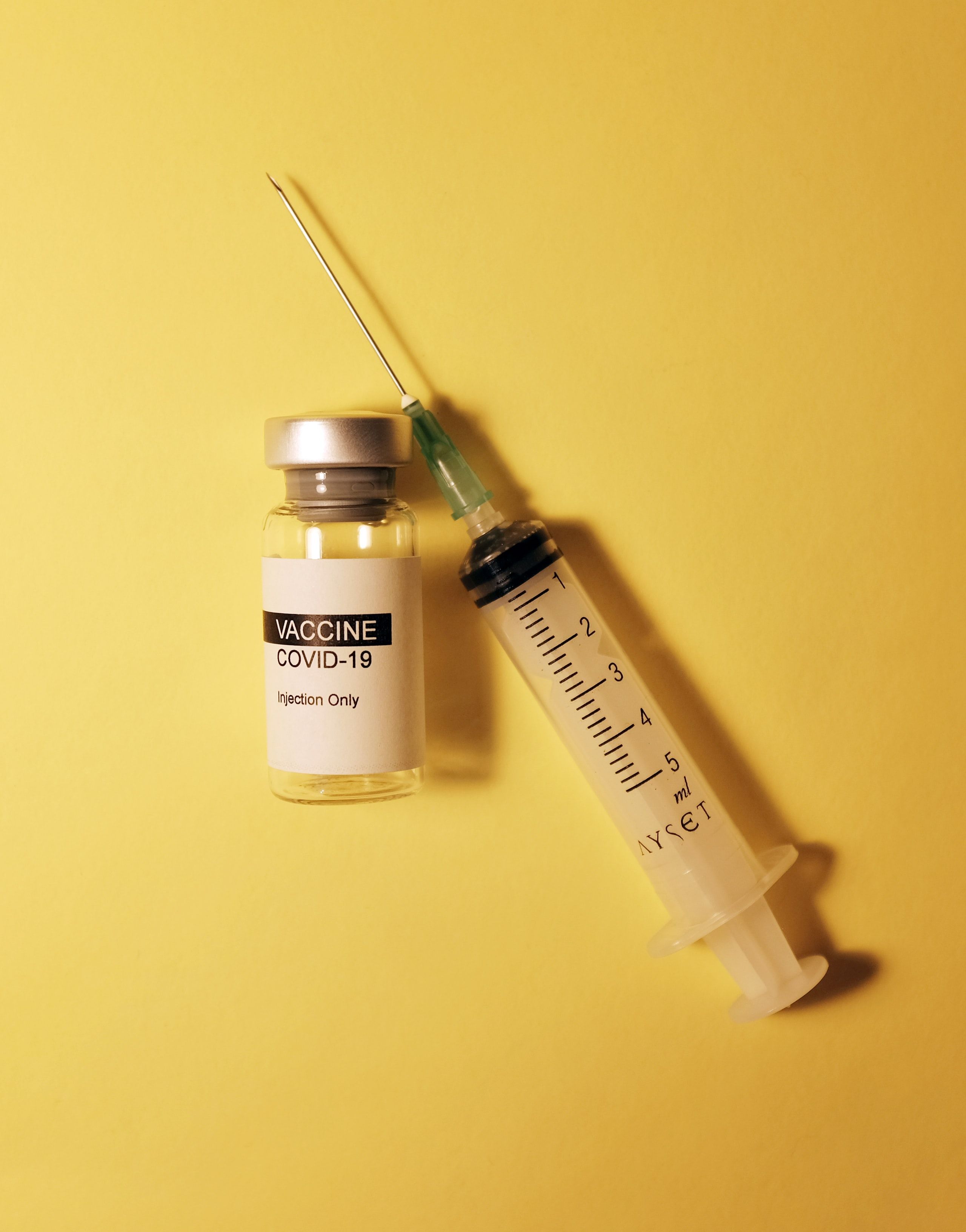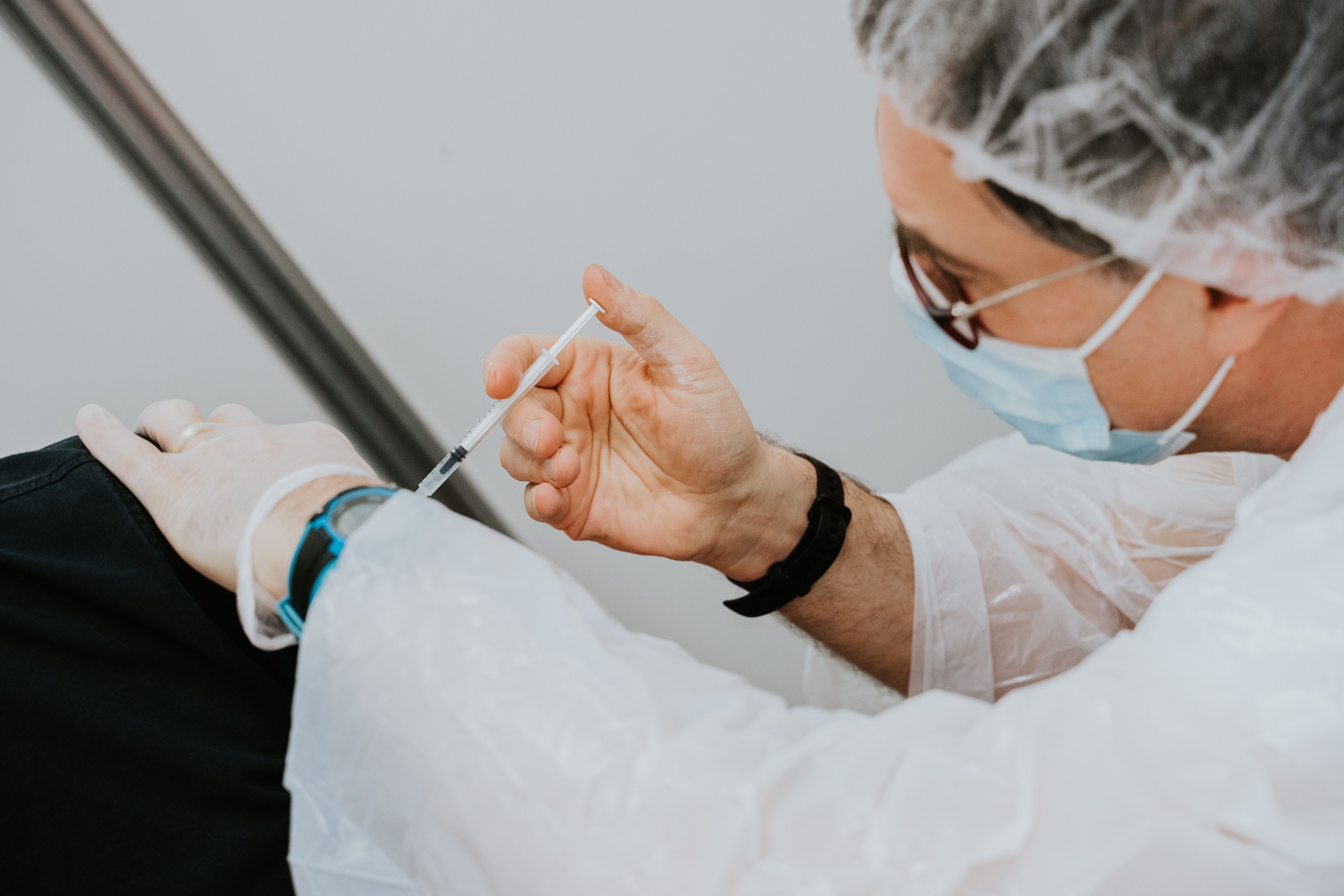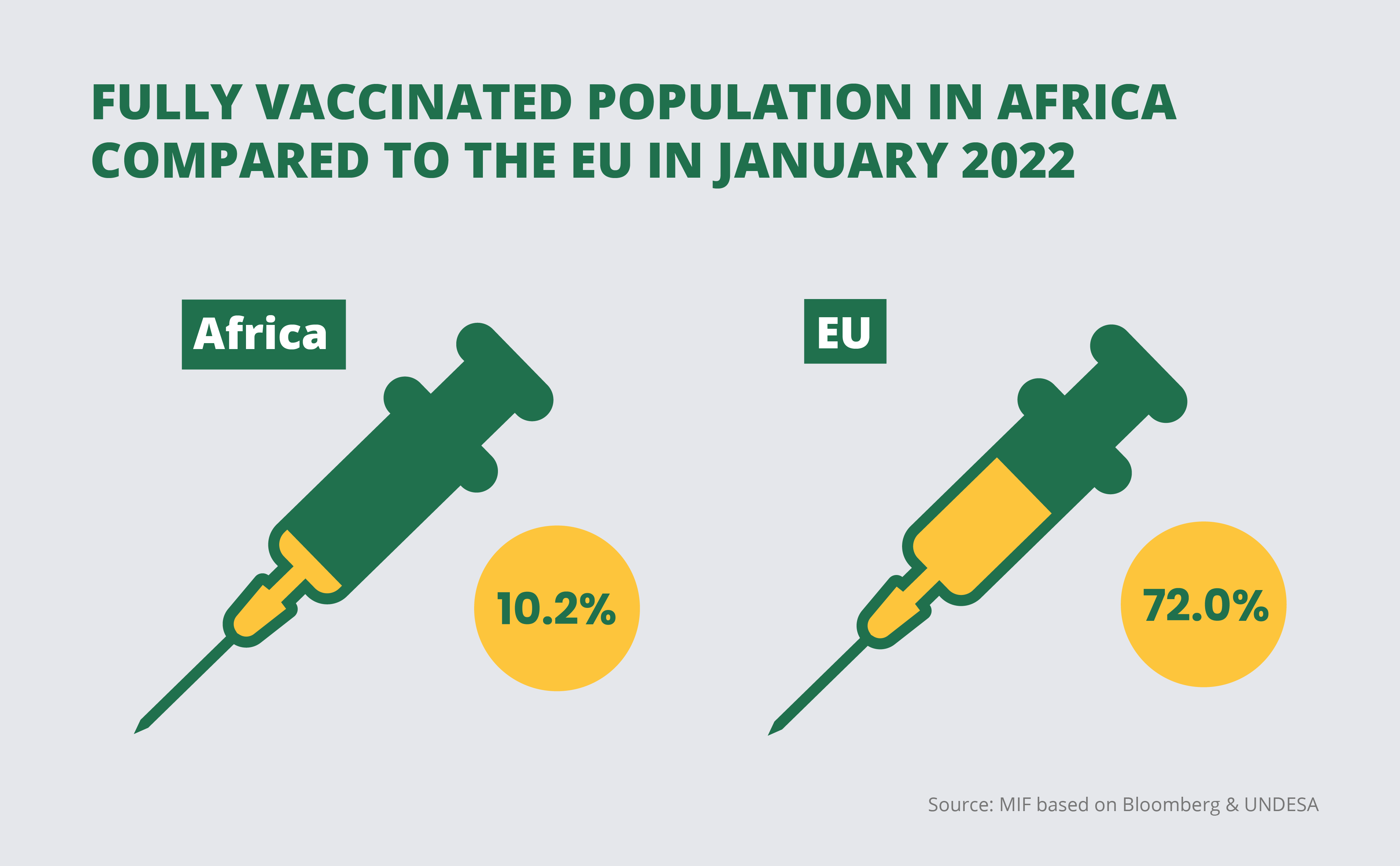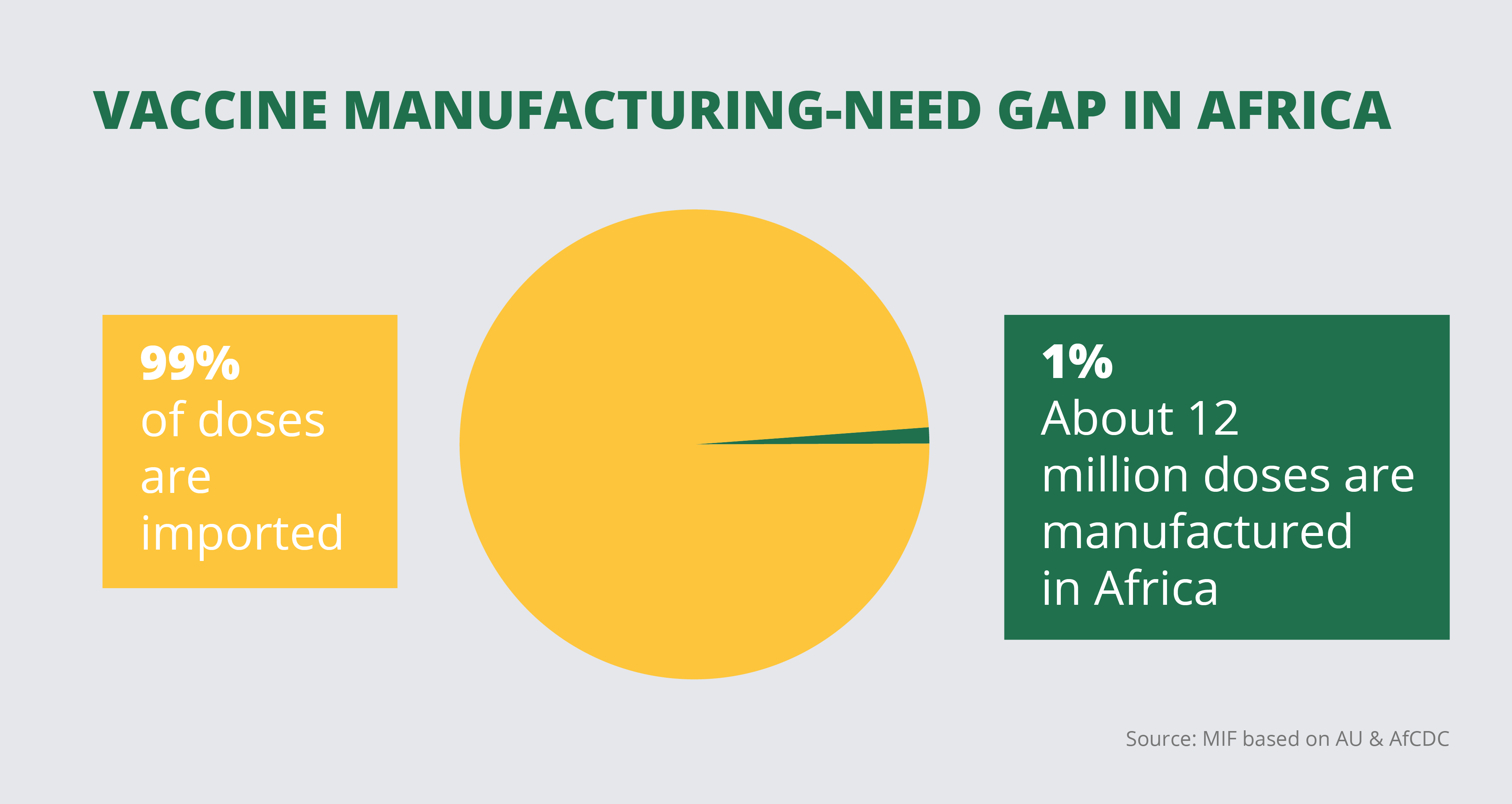- Health
Health: COVID-19 vaccination in Africa
- Chahaiya Pilkington

‘The data for this story were compiled and visualised by the Mo Ibrahim Foundation. View more here.’
1.More than one year after the launch of the global vaccination campaign, comparing the state of the COVID-19 pandemic in Africa and Europe reveals unfair discrepancies in immunisation. Beyond access to vaccines, this also owes to distribution bottlenecks and to the lack of vaccine manufacturing capacity on the African continent.
• Vaccination rate in Africa is barely over 10%, compared to 72% in EU (January 2022)
• About only one in seven COVID-19 infections are being detected in Africa, according to the WHO
• COVAX had only shipped over **1 billion COVID-19 **vaccines to 144 participants by mid-January 2022, well behind its delivery target set at 2 billion doses by the end of 2021
• Africa accounts for 25% of the global vaccine demand but currently imports 99% of its routine vaccine needs (2021)



10%
Vaccination rate for COVID-19 in Africa is barely over 10% (January 2022).
72%
Vaccination rate for COVID-19 in the EU (January 2022).
1/7
Only 1 in 7 COVID-19 infections are being detected in Africa, according to the WHO.


2.Two years into the pandemic, Africa and Europe are differently impacted by the crisis, with substantially lower absolute and relative figures of infections on the African continent. Yet, most infections are below-the-radar and these are no less consequential for global health.
Recorded cases show that Africa is much less hit than Europe
• As of late January 2022, cumulative COVID-19 cases per 1 million population are nearly 25 times higher in the European Union than in Africa.
• The cumulative COVID-19 deaths per 1 million population are nearly thirteen times higher in the EU than in Africa.
• While home to 18% of the global population, Africa’s share of cumulative COVID-19 cases only amounts to about 3% of global recorded cases. Comparatively, while home to close to 6% of the global population, EU accounts for 22% of global recorded cases.
The impact of COVID-19 in Africa may be greatly under-estimated: according to the WHO, about only one in seven COVID-19 infections are being detected in Africa
• WHO seroprevalence studies in 11 African countries estimated that up to about 68% of the population could have some conferred COVID-19 immunity (as of September 2021).
“No one is safe until everyone is (…), as long as the general vaccination in Africa remains below 10%, the whole international community has failed, because it means we won’t have done enough” – Jutta Urpilainen, European Commissioner for International Partnerships
“No one is safe until everyone is (…), as long as the general vaccination in Africa remains below 10%, the whole international community has failed, because it means we won’t have done enough.”
25%
Africa accounts for 25% of the global vaccine demand.
99%
Currently 99% of its routine vaccine needs are imported (2021).
3.High levels of vaccine inequity translate into blatant global injustice and failure in the pandemic response. Only seven out of 54 African countries have reached the 2021 year-end WHO target of fully vaccinating 40% of their people, compared to 26 out of the 27 EU countries.
Failure to meet the goals set by global health institutions:
• According to WHO, 70% of population should be vaccinated by end 2022 to reach immunity level.
• Under current vaccine rollout projections, it is estimated that most African countries will not achieve mass immunisation until 2023. In the continent’s poorest countries, it may not even appear until 2024.
• While home to 18% of the global population, Africa’s share of cumulative COVID-19 cases only amounts to about 3% of global recorded cases. Comparatively, while home to close to 6% of the global population, EU accounts for 22% of global recorded cases.
Global injustice, favouring Europe:
• As of late January 2022, COVID-19 vaccine doses administered in Africa account for less than half of the amount administered in the EU, for a population that is more than three times larger.
• Vaccine donations under the COVAX global vaccine-sharing scheme fall well below the promised amounts.
“There is no doubt that Africa felt let down by Europe because of vaccine nationalism and the collapse of some global architecture, including multilateral mechanisms... Even before the first vaccination was approved, we knew that Africa would be at the end of the queue and that it would trickle down after everyone has taken their share.”



“There is no doubt that Africa felt let down by Europe because of vaccine nationalism and the collapse of some global architecture, including multilateral mechanisms ... even before the first vaccination was approved, we knew that Africa would be at the end of the queue and that it would trickle down after everyone has taken their share.” – Raji Tajudeen, Head of Public Health Institutes & Research Division at Africa Centres for Disease Control and Prevention (Africa CDC).
- Low levels of vaccination in Africa also owe to numerous distribution bottlenecks. Immediate challenges include facilitating access to jabs. Indeed, confirmed procurement doses already cover slightly more than half the population. Vaccine hesitancy and unaffordable tests are amongst the key determinants behind slow vaccination campaigns.
Shortages in training and equipment:
• Only health workers with specialised training can administer vaccines, as several of the COVID-19 vaccines pose additional challenges even for trained health workers, such as on-site mixing.
• A shortage of syringes – in particular a 0.3ml syringe version required to deliver the Pfizer dose is slowing delivery in many places according to the WHO.
The structural difficulties undermining mass vaccination campaigns:
• Last mile and reaching rural and marginalised communities: any mass vaccine campaign requires refrigerated vehicles, cold chain packaging, tracking and visibility tools, as well as relevant transport networks.
• Vaccine hesitancy: due to the speed with which the COVID-19 vaccines have been developed, people have raised additional concerns about safety and efficacy. Combined with widely publicised hesitancies over certain manufacturers, and a global rise in vaccine scepticism, hesitancy has hampered the vaccine drives.
“Not all blame should be on Europe. Africans need to admit that they also made mistakes, the main one being only spending 1.9% of GDP on healthcare” – Mo Ibrahim
“For many Africans, getting vaccinated can necessitate taking a day off from work and not earning a wage” – Solomon Zewdu, Deputy Director Africa Office, Bill & Melinda Gates Foundation
“Not all blame should be on Europe. Africans need to admit that they also made mistakes, the main one being only spending 1.9% of GDP on healthcare.”